11 Best first-time Europe itineraries for 1, 2, or 3 weeks
Europe is going to be very busy in the summer of 2024 as the world is back to normal and travel demand is higher than ever. One other key factor is that most European currencies are still hovering at lower levels historically compared to the US dollar, which means that Europe will feel somewhat cheap again this year. In fact, according to our World Backpacker Index, European cities like Lisbon, Madrid, and Munich are about 30% cheaper to visit than Boston, Chicago, and New York City. In other words, flying to Europe might seem expensive, but most things will be cheaper once you get there compared to the costs of visiting a large US city.
Below you’ll find 11 of the most popular and best itineraries for a first visit to Europe. Your first visit is not really the time to be different or creative, and the famous destinations tend to be popular for a reason. In other words, it’s kind of silly to visit, say, Bulgaria, if you’ve not yet been to France or Italy. I lay out the best options along with how long to stay in each place as a general guide. I also discuss Mediterranean cruises, which can actually be an amazing way to see a lot of Europe on your first visit, especially if you don’t like going back and forth to train stations and airports every 2 or 3 days.
For a bit of fun you might be interested in the cheapest 5-star hotels in Europe, which start at US$80 per night for really nice hotels. It helps show that if you choose some of the cheaper cities, you can treat yourself to some luxury that you can’t afford in most other places.
This article was last updated in March, 2024.
There are 11 starter itineraries described in detail below
- Classic London and Paris
- England and Scotland
- Paris and Italy
- Mediterranean cruise
- France, Belgium, and Netherlands
- Paris and elsewhere in France
- Italy
- Spain
- Germany
- Switzerland
- Best of cheap eastern Europe
For each itinerary there are suggestions of other destinations that are easy to add on to the main cities.
Note: This article was most recently updated in March, 2024
Building the best itinerary for your first trip to Europe
Below there are 11 popular itineraries for one week in Europe. If you’ve only got a week then choose one of them and assume you’ll return again to conquer more of this amazing part of the world. If you’ve got more time then you can choose from some of the top add-on suggestions for each one.
Start in the most famous cities
Your first visit to Europe is no time to try to be different or edgy. I recommend that you focus on these 5 great cities before you start branching out into cheaper or more obscure places.
Keep your travel days to a minimum
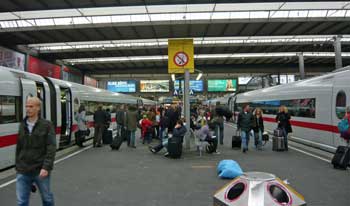
Spend 3 (or 4) nights in almost every major city
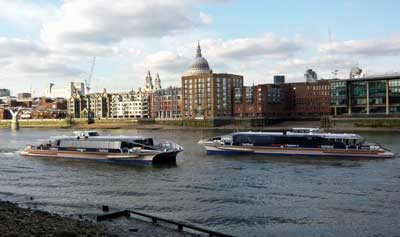
So many first-time visitors are initially planning on spending only 1 or 2 nights in major cities that I wrote a detailed explanation of why 3 nights is ideal for almost all European cities, even if you want to see as much as possible.
3 (or 4) nights will be enough for any city on your first trip
Most first-time visitors are tempted to move too quickly, but it can also be a mistake to move too slowly. It’s really amazing how much you can see in two full sightseeing days. If you spend too long in one city you’ll end up seeing things that are way down your list, while you could be in another city seeing things at the top of your list there.
Choose cities that are easy to reach from each other
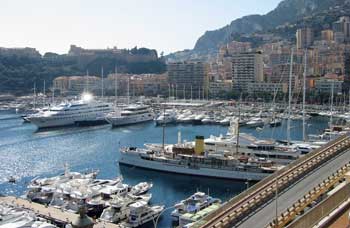
For your first trip it’s best to visit cities that are no more than a 5-hour train ride apart.
Choose cities that are connected by reasonable train rides rather than flights
To build on the point above, finding cheap flights within Europe is easy, but train travel is about a million times more enjoyable and less stressful. You’ll enjoy the train rides almost as much as the cities, so focus on places that are within 5 hours of each other by train.
Start with one of the classic itineraries below, and then add to it if you have more time
If you only have 7 days then you’ll find a list below of classic itineraries that are well-suited to a first visit to Europe. Hopefully you have more than 7 days though, and if you do you can add in one or more of the suggested add-on cities to build an itinerary that appeals most to you.
Best 1-week itineraries for the first time in Europe
Itinerary 1: Classic London and Paris
Fly into either city and take the 2-hour Eurostar train between them
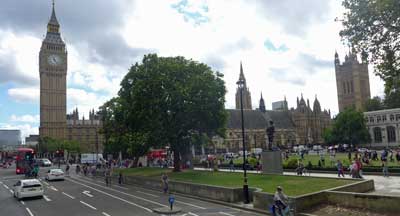
London highlights
- Big Ben and Parliament
- Westminster Abbey and St. Paul’s Cathedral
- Tower of London and Tower Bridge
- West End shows (Broadway equivalent) and classic pubs
- Buckingham Palace and Windsor Castle
Paris is actually far more beautiful than London and the food is famously much better as well. Since Paris gets so many tourists from non-French speaking countries, it’s easy to get by on just English, and the Metro system makes it fast and easy to get around. The architecture of both cities is amazing from the Tower of London, Big Ben, Westminster Abbey to the Louvre and the Eiffel Tower. These cities each pack a huge punch and they are very different from each other as well. Actually, England is arguably the best choice for your first trip to Europe.
Paris highlights
- Eiffel Tower
- Louvre Museum and Museum de Orsay
- Arc de Triomphe and other monuments
- Montmartre neighborhood and Sacré Coeur Cathedral
- Probably the world’s best affordable restaurants and wine
Best add-ons to London and Paris
- Edinburgh (2 or 3 nights, from London)
- Amsterdam (2 or 3 nights, from Paris)
- Bruges and Brussels (2 nights, from Paris)
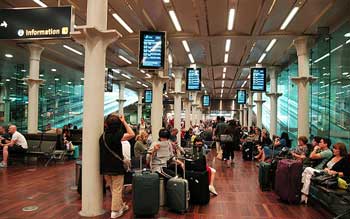
>>>Best one-week London and Paris itinerary in detail
>>>Check London hotel deals
>>>Check Paris hotel deals
Itinerary 2: England and Scotland
- London (3 or 4 nights)
- York (1 night)
- Edinburgh, Scotland (2 or 3 nights)
- Inverness, Scotland (2 or 3 nights)
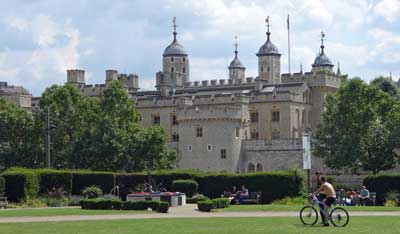
York is a small Roman city with intact city walls and one of the most famous cathedrals in Europe. Edinburgh is not only the capital of Scotland, but it’s easily the second most interesting city in all of Britain. If your time is short, skip York and spend more time in Edinburgh.
If you prefer to focus on the south of England on your first trip then the best option is to go to Bath or nearby Bristol after London. Bath is another of England’s top destinations and it’s a gorgeous city that has been a spa resort for many centuries. It’s also reasonably close to Stonehenge. You can also easily get to Cornwall in England’s southwest corner from Bath, and that’s a whole different and fascinating experience (with nicer weather than up north).
If you’ve got more than a week and want to spend more time in Scotland, especially in the summer months, the place to head to is Inverness. It’s a small town that is considered the gateway to the Scottish Highlands, but it’s an interesting and charming place on its own. You can take day-trips by bus to the highlights of the Highlands including the Isle of Skye and Loch Ness. Between you and me, it’s better to minimize time in Loch Ness or skip it altogether because it’s not one of the more photogenic parts of Scotland and the monster has always been a hoax.
Travel times between the recommended places
- London to York by train: 2 hours
- York to Edinburgh by train: 2.5 hours
- London to Edinburgh by train: 4 hours
- Edinburgh to Inverness by train: 3.5 hours
- London to Bath by train: 85 minutes
Best add-ons to England and Scotland
If you think you want to spend your whole trip in Britain you should have a look at our article on the best itineraries in England, Scotland, and Wales.
>>>Check London hotel deals
>>>Check Edinburgh hotel deals
Itinerary 3: Paris and Italy
- Paris (3 or 4 nights)
- Venice (1 night)
- Florence (2 or 3 nights)
- Rome (3 nights)
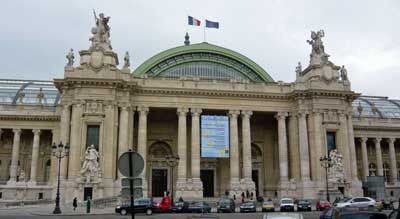
From Paris you can easily fly to Venice (or nearby Treviso) where you should try to spend about 24 hours. Venice is small enough to see in a full day, and so crowded that most people are satisfied to leave after that day. The key is to stay in the main part of the main island so you can enjoy Venice before the cruise passengers and day-trippers arrive, and also after they leave for the day. Two nights in Venice would not be wasted time, and it’s possibly the most gorgeous city in the entire world, but you can see the best of it in a bit over 24 hours.
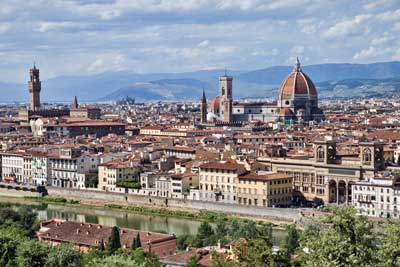
Rome also lives up to the hype and spending a day in the Vatican City will be a highlight even for non-Catholics, but it’s also a crowded and busy city so three days is usually enough for most people. Similar to Paris, Rome is an unusually beautiful city from almost any angle when you are in the historical center. You’ll walk through a stunning piazza (town square) and then turn a corner and you’ll see gorgeous buildings or public statues that are as nice as anything in the museums. Seriously, it’s worth a visit.
Paris to Venice flight: 1 hour 35 minutes
Venice to Florence by train: 1 hour 53 minutes
Florence to Rome by train: 1 hour 16 minutes
You can of course instead fly from Paris to Rome and then go north to Florence and then to Venice and fly home (or back to Paris) from there, and it would be just as enjoyable.
Best add-ons to Paris and Italy
France
- Nice/Cannes/Monaco (2 or 3 nights)
- Avignon (2 nights)
- Bourges (2 nights)
- Bordeaux (2 nights)
- Aix-en-Provence (2 nights)
- Reims (2 nights)
- Dijon/Burgundy (2 nights)
Italy
- Milan (1 or 2 nights)
- Lake Como (2 nights)
- Siena (2 nights)
- Cinque Terre (1 night)
- Naples/Sorrento/Amalfi Coast/Pompeii/Capri (3 to 5 nights)
- Sicily (3 to 4 nights)
>>>Much more information in this article about the best France and Italy itineraries
>>>Check Paris hotel deals
>>>Check Venice hotel deals
>>>Check Florence hotel deals
>>>Check Rome hotel deals
Itinerary 4: Mediterranean cruise
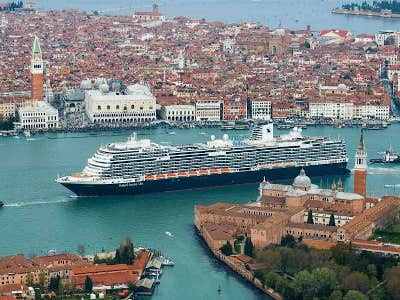
In spite of the reputation of cruises to be floating buffets, they can actually be an excellent way to visit a great number of amazing European cities in a short time. The ship typically is in port from the early morning until mid evening, often giving you the opportunity to have dinner in the city (unlike Caribbean cruises). Better still, the cruise ports are often near the center of town, so you can just walk off the ship and do sightseeing on foot or by public transportation.
Mediterranean cruises usually start at 7 nights but can go up to 3 weeks, which can provide an amazing tour of the entire region without having to pack and repack your bags more than once. They also can provide excellent value, especially compared to the price of taking trains or flights and finding new hotels in every destination.
Most popular Mediterranean departure ports
Barcelona, Spain – It’s an easy port to reach. Ships generally go from Barcelona with stops in France and then Italy.
Rome (Civitavecchia), Italy – The port isn’t very close to Rome, but it’s easy to get back and forth. Ships go west to France and Spain as well as south around the tip of Italy and then on to Croatia, Venice, and to Greece.
Venice, Italy – The cruise ships no longer dock close to the best tourist areas, but it’s easy enough to visit Venice for a day or two before boarding a ship. Ships starting in Venice go south and then head west and to Rome and then to France, or they go south to Croatia and then head east to Greece.
Athens, Greece – The cruise port of Piraeus is just south of Athens and easy to reach. Ships from Athens usually head west towards Croatia, Italy, France, and Spain, but there are also ships that visit Greek islands and Turkey.
>>>Check for deals on Mediterranean cruises
Alternative to consider: a river cruise
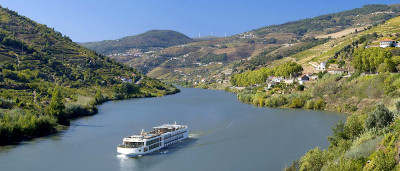
Amsterdam, Budapest, and Prague are some of the most popular river cruise ports, but there are dozens of others including many smaller towns in France where few other tourists will be when you stroll off the ship. There is little or no entertainment on the river cruise ships, but passengers don’t miss it because the entire day and into the evening is spent just steps from local cultural offerings and restaurants.
>>>Check for Europe and river cruise deals
Itinerary 5: France, Belgium, and Netherlands
Paris to Brussels: 1 hour 22 minutes
Brussels to Bruge: 58 minutes
Bruges to Amsterdam: 2 hours 45 minutes
Amsterdam to Paris: 3 hours 17 minutes
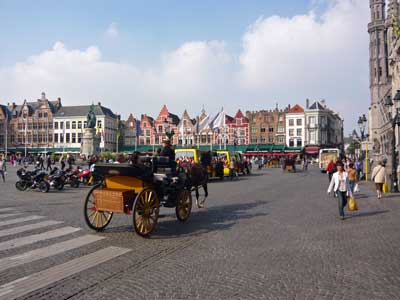
Spending 4 nights in Paris and 3 nights in Amsterdam would be a great trip, but if you want to see something else you’ve got a couple options in between. My advice is to spend an afternoon looking around the Grand Place (main square) in Brussels and then hop a 58-minute train ride to Bruges for a night or two. Brussels isn’t a great tourist city, but Bruges really is so it’s a better option for most people. Whatever you choose out of this group, you can be back in Paris on another high-speed train for your flight home.
Best add-ons to France, Belgium, and Netherlands
- Luxembourg City (1 or 2 nights)
- Cologne, Germany (1 or 2 nights)
- London (3 or 4 nights)
- Interlaken, Switzerland (2 or 3 nights)
>>>Check Paris hotel deals
>>>Check Bruges hotel deals
>>>Check Amsterdam hotel deals
Itinerary 6: Paris and elsewhere in France
- Paris (3 or 4 nights)
And a choice of:
- Nice/Cannes/Monaco (2 or 3 nights)
- Avignon (2 nights)
- Bourges (2 nights)
- Bordeaux (2 nights)
- Aix-en-Provence (2 nights)
- Reims (2 nights)
- Dijon/Burgundy (2 nights)
- Normandy (2 nights)

While Nice is a wonderful tourist city for a look at the French Riviera, the other larger cities of Lyon and Marseilles are probably better saved for a future trip because they are light on key sights compared to many smaller towns. Wine lovers can rent a car or take trains into Bordeaux or Burgundy. Since you can get between most of these towns by train in 2 hours or less, spending only 2 nights in each one is a reasonable option if you want to see a lot in a short time.
Normandy is an interesting choice and easy to reach in only about two hours by train from Paris. Some visitors like to see the famous WWII beaches and memorials, while others (especially in summer) like to check out one or more of the beach-resort towns. Deauville is one of the more famous of those, and it’s also famous for its horse race track and as one of the epicenters of the industry in Europe.
Best add-ons to Paris and elsewhere
- More France, of course
- London (3 or 4 nights)
- Interlaken, Switzerland (2 or 3 nights)
- Amsterdam (2 or 3 nights)
>>>Check Paris hotel deals
>>>Check Nice hotel deals
Itinerary 7: Italy
Rome to Florence: 1 hour 16 minutes
Florence to Venice: 1 hour 53 minutes
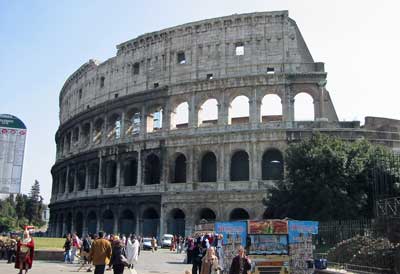
Venice is small enough that you can see the main sights in about 24 hours, and it’s so insanely crowded that many people tire of it after about a day as well. It’s better to pay more for a hotel to be on the main island and visit quickly than to save money with a hotel on the mainland where you’ll be in crowds going back and forth as well. Florence is the most relaxing of the 3, and also a great base for side trips to Pisa, Siena, and Cinque Terre, just to name a few.
Going to Italy? Here are the best first-time Italy itineraries for 3 days to 2 weeks (in much greater detail)
Best add-ons to Italy
- Milan (1 or 2 nights)
- Lake Como (2 nights)
- Siena (2 nights)
- Cinque Terre (1 night)
- Naples/Sorrento/Amalfi Coast/Pompeii/Capri (3 to 5 nights)
- Sicily (3 to 4 nights)
>>>Check Rome hotel deals
>>>Check Florence hotel deals
>>>Check Venice hotel deals
Itinerary 8: Spain
Madrid to Barcelona: 2 hours 30 minutes
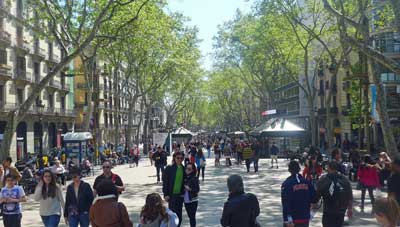
A huge part of Spain’s tourism industry is built around its southern beaches and islands such as Ibiza, Mallorca, and Tenerife (in the Canary Islands). For most people it’s best to ignore those places on your first trip because none of the beaches are special enough to spend days on them compared to the culture of the cities.
Best add-ons to Spain
By popular demand, I’ve added a full article on where to go in Spain with itineraries from 7 to 10 days up to two weeks.
>>>Check Madrid hotel deals
>>>Check Barcelona hotel deals
>>>Check Lisbon hotel deals
Itinerary 9: Germany
Berlin to Munich: 6 hours 2 minutes
Munich to Rothenburg ob der Tauber: 2 hours 56 minutes
Munich to Füssen: 2 hours 4 minutes
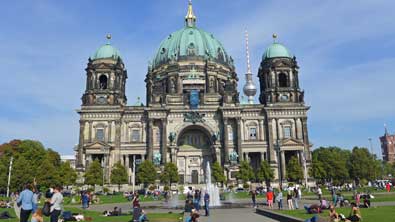
Those two cities are the keys to a Germany visit, and after that you’ve got a wide variety of choices. I cover most of the popular choices in my article on where to go in Germany, which covers several smaller towns that are major highlights.
Best add-ons to Germany
- Cologne (1 or 2 nights)
- Hamburg (2 or 3 nights)
- Amsterdam (3 nights)
- Prague (3 nights)
- Salzburg (2 or 3 nights)
- Vienna (3 nights)
- Interlaken, Switzerland (3 nights)
- Lucerne, Switzerland (2 or 3 nights)
>>>Check Berlin hotel deals
>>>Check Munich hotel deals
Itinerary 10: Switzerland
- Interlaken (3 nights)
- Bern (1 night)
- Lucerne (3 nights)
Zurich Airport to Interlaken: 2 hours 10 minutes
Interlaken to Bern: 53 minutes
Bern to Lucerne: 1 hour 50 minutes
Lucerne to Zurich Airport: 1 hour 3 minutes
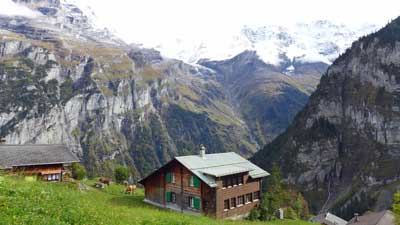
Interlaken is the best hub for the most dramatic Alps views and experiences. The one-hour cable car ride up to the Schilthorn observation deck is something you’ll never forget, and the only thing that might be more dramatic is the train ride up to the Jungfraujoch station, which is the highest in Europe. Lucerne is almost as beautiful with a scenic lake at its heart and also great mountaintop views nearby. If you do want to see a Swiss city then the capital of Bern is the most interesting and photogenic on a short visit. Read more about where to go in Switzerland for even more ideas.
Best add-ons to Switzerland
>>>Check Interlaken hotel deals
>>>Check Lucerne hotel deals
Itinerary 11: Eastern Europe’s best cheap cities
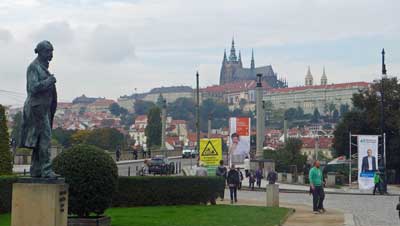
Each of these cities is beautiful and historic, but English is less widely spoken so they can also be quite a bit more challenging for a first-time visitor. Another difficulty is that the trains between them are still quite slow compared to the high-speed rail in the West, so it takes most of a day from one to another, and a bus is often a better choice. I cover this best cheap Europe itinerary more fully in the linked article.
Prague to Budapest: 6 hours 41 minutes
Budapest to Krakow: 9 hours 54 minutes (flying might be better)
Best add-ons to cheap Eastern Europe
- Cesky Krumlov, Czechia (2 nights)
- Ljubljana, Slovenia (2 or 3 nights)
- Split, Croatia (3 nights)
- Belgrade, Serbia (2 or 3 nights)
- Sarajevo, Bosnia and Herzegovina (2 or 3 nights)
- Sofia, Bulgaria (2 or 3 nights)
>>>Check Prague hotel deals
>>>Check Budapest hotel deals
>>>Check Krakow hotel deals


Thanks so much for your insight. OMG, I meant to write Rome instead of Paris. So sorry. We want to stay in Rome 3 nights, not Paris. Thanks for your thoughts on Ireland. I think we would want to see the countryside, and less of Dublin, so I will look into Shannon as an option as well. So if we are not going to Paris (because of my typing error) and going to Rome instead, how would you suggest getting from London to Italy?
Thanks! And sorry for my error.
Morgan
Morgan,
Not a problem, and in this case it’s even more of a shame that you will be missing Paris. You’ll definitely want to fly from London to Italy then. You could either fly into Venice (or nearby Treviso Airport) or fly into Rome, and then fly back to London or Ireland from the other one. Let me know if you have any other questions. -Roger
Roger,
Really appreciate this website and the insight that you bring. Reading your thoughtful replies to everyone’s questions is just as enlightening as the articles. Thanks so much for your willingness to give your time and knowledge.
I’m from California, and my family of four (two children 12, 13) is planning our first trip to Europe for next summer. We have about 15 days, and we’ve narrowed down the places we’d like to visit.
London (3 nights)
Ireland (3 nights)
Paris (3 nights)
Florence (3 nights)
Venice (1 night)
Cinque Terre (1 night)
I have some questions regarding this itinerary though:
1. I’m not quite sure the best places to visit and stay in Ireland?
2. Is a quick flight the best way to get from London to Ireland?
3. What’s the best order to see these places?
4. Is flying the best way to get from UK to Italy? Or could we take the train and maybe stop for a night or two at someplace along the way?
5. What would tend to be the cheapest city to fly into from California? Planing the trip for June.
My main focus right now is figuring out the most efficient way to travel between home and Europe, and between each city. That way we get to spend as much time as possible enjoying the city. Then I’ll focus on accommodations. I understand that Ireland isn’t usually the top of the list of first time visits to Europe, but my daughters really want to go there.
Thanks so much for your input!
Morgan
Morgan,
Thank you for the kind words. I enjoy trying to help people with this, and I’m also originally from California (The OC).
1. Ireland is a tricky one for a short visit. Personally, I find Dublin itself to be a bit disappointing compared to most other major European capitals, but the smaller towns and countryside and castles and whatnot are wonderful. So with only 3 nights you’d probably want to just stay in Dublin (which is definitely interesting), or perhaps fly into Shannon Airport and go to Galway for the three days, which would also be enough time to visit the Cliffs of Moher and even Aran Island. If you have Irish family you might instead want to visit wherever they are from. But if not I think I’d recommend saving Ireland until you have a week or more, and going to Edinburgh instead. Edinburgh is an excellent destination and it can be reached by train from London.
2. If you do go to Ireland then it’s fastest to fly between one of the London airports and either Dublin or Shannon. The fares are quite low if you book far enough in advance.
3. It would be most efficient to fly into Ireland and then to London and then take the Eurostar train to Paris and then fly to Italy. It’s unusual that you are skipping Rome, but maybe you’ve been there? If not, I wouldn’t skip it.
4. The trains that go from France into Italy are still fairly slow, so flying is WAY faster and almost always cheaper as well.
5. You can often get cheap flights from LA or SFO into Dublin or Shannon. If you do include Ireland you could then fly back there after Italy to board your flight home. It would be more efficient if you could fly into Ireland and then out of Italy, but across the Atlantic it’s hard to find an “open-jaw” fare that is close to the price of a round-trip, so booking one more flight back to Ireland is probably cheaper.
I’m happy to help more if you are unsure of some things, so feel free to ask other questions. -Roger
Roger, I’m a first time traveler and I am looking to take a week after graduation. That said I don’t have to hold it to that week. I would love to manage my budget well but that’s not my main focus. I just want to experience other cultures but I am not great with any of my languages besides English at this point.
I would like to spend some time at a beach and have looked at places like Croatia. After that I am still very undecided. I know you recommend Spain above but I am really at a loss on what I want to do past a few days at the beach. Any additional recommendations would be greatly appreciated.
thanks,
Will
Will,
First off, you can have a meaningful and enjoyable visit anywhere in Europe speaking only English, although some places are slightly more challenging than others. Since this is your first trip to Europe I would probably skip any real beach time, except perhaps for one day in Barcelona if you go there. It sounds like you’d be going in late May or maybe early June, and that is a really nice time to go because the weather will be warm (but not too hot) and yet the biggest crowds of summer are still a month off. Even still, most beaches in Europe are either lousy (compared to those in the US or Australia etc) or remote or absurdly crowded or sometimes all of those things. Wide and sandy beaches are rare in Europe except for southern Spain and Portugal, and those places don’t have much else to see once you are there. Barcelona, as mentioned, is an exception as it’s a really cool city with plenty to see and it also has a nice strip of sandy beach (that was created around when they hosted the Olympics.
Croatia is interesting, but I still consider it more of a second-tier destination and probably better for someone who is getting bored with Paris, London, Berlin, Italy, and Spain. In other words, if this is your first Europe trip I think you should go to 2 or 3 of the classic destinations first. I actually discuss that in my article a few years ago about what I consider to be Europe’s 5 best destinations for first-time visitors. Have a look at that and I’ll be happy to help you plenty more with this as you are making up your mind. Paris and Amsterdam is an excellent trip, or Rome, Florence, and Venice, even as popular as they are. -Roger
Hi Roger,
I am from New Delhi, India and am really quite amazed to read all your posts and advice to everyone. You are doing a great job..thanks.
As others, I am also planning a 2 weeks’ trip to Europe in Aug, 2018 with my wife and my 9 year old daughter. We are first timers to EU and I am choosing to travel on my own. This is what I have in my mind as of now –
day 1) Delhi London flight landing heathrow at 1500 hrs. I plan to take the heathrow express to London city and hope to use the late evening around London.
days 2 & 3) London and surroundings and late evening of day 3 take the 2.5 hours train to Paris. Night stay at Paris.
days 4 & 5) Paris sight seeing and end of day 5 leave for Brussels by train – 2 hours – night stay at Brussels
day 6) – Brussels – day trip, evening train – 2.5 hours – night stay at Amsterdam
day 7) Amsterdam – day trip, again late evening train – 5 hours
day 8) Frankfurt – day trip again, late evening train – 3 hours
day 9) Munich – late evening train 5 hours
days 10, 11& 12) Zurich / Switzerland, last day train to Rome – 5 hours
days 13 & 14) Rome
day 15 departure to Delhi from Rome 1400hrs
Do you think the above is possible? though we believe that we have some stamina to do these train travels, or am I dreaming? I have checked on the internet and find that most of these cities are 2, 4 or 5 hours of train journey and I plan to pre book and use EUrail. Please suggest if this is even possible – I haven’t done any bookings as yet and am open to changes.
Thanks
Gopal Ganatra
Gopal,
The plan you have in mind is definitely possible, but I don’t really think it would be all that enjoyable. It’s true that many of those train rides are relatively short, though you also have to consider the amount of time from when you check out of one hotel until you check into the next hotel. Even with a 3-hour train ride that is going to be at least 5 hours or possibly more if you aren’t staying near the train station. Most people are also fairly tired after train journeys like that, so immediately putting your luggage into the hotel and racing over to a museum or sight isn’t so easy to do. As I say so often, I highly recommend staying 3 nights in almost any city you visit because that gives you two full sightseeing days followed by one travel day.
Another thing to consider is how worthwhile each city is. Frankfurt is famous for its busy airport and being home to most German banks, but there are almost no sights of interest, especially compared to Berlin or Cologne or even a small town such as Rothenburg ob der Tauber. So I would eliminate Frankfurt and probably Brussels as well, as it’s mostly a city built for business travelers and government workers. As for Switzerland I would avoid Zurich for the same reasons and it’s also incredibly expensive, but Interlaken and Lucerne are wonderful so you might consider visiting one or both of those instead. Have a look at my article on where to go in Switzerland for more details.
It’s a bit like someone flying into Delhi and spending 2 days there and then half a day in Agra and then one day in Varanasi and then one day in Pushkar and then flying to Mumbai for two days and then one day in Goa. That person would be seeing many places but they wouldn’t have enough time in each one to really enjoy the visit.
One more point is that going from one city to the next can be expensive so it will drive up the overall cost of your trip. In 15 days I would recommend London, Paris, Amsterdam and then perhaps a flight to Italy to see Venice for one day (it’s small), Florence for 2 nights, and then Rome for 3 nights. Or you could do London, Paris, Amsterdam, and then Munich and Interlaken. It would cut way down on the cost of transportation and it would give you enough time to see the famous things you’ve come all that way to see. I’m happy to help more as you are planning so let me know if you have other questions. -Roger
Hi Roger,
I have read many of your comments and love your suggestions. I am planning a two week trip to Europe after my college graduation the end of May.
I am planning to start in Munich, say there for a few nights, then travel to Salzburg for 2 nights. I then have 8 days and am not sure where to go next, hoping for some suggestions! I’m having trouble balancing out seeing as much as I can, while enjoying the trip and not going overboard with travel.
I would appreciate if you could share some ideas!
Thank you!
Maggie
Maggie,
My recommendation is to spend 3 nights in just about any city that you visit. Salzburg is small enough to enjoy in two nights if you are in a hurry, but three nights would be better. From Salzburg your best choices are Vienna, which is only 2 hours 15 minutes away on the high-speed train, or you could go to Cesky Krumlov, which is about three hours from Salzburg on a shuttle, or Prague, which is about 5.5 hours by train from Salzburg, or 3 hours by bus from Cesky Krumlov or 4 hours by train from Vienna. If you have time I would recommend all of those cities. Cesky Krumlov is a charming small village (and also quite cheap), which is a nice contrast from the largest cities such as Prague or Vienna.
Vienna is loaded with great sights, although it’s not one of my favorites partly because it’s very quiet at night unless you are going to the opera or a classical performance.
Or from Salzburg you could take a train down to Venice in about 5.5 hours and then go from there to Florence and Rome for the classic Italy Big 3. Assuming you want to travel on the ground rather than flying, I’d say those are your best choices by far. I’m happy to answer other questions on this if you have them, and I hope this helps. -Roger
This is our first time to Europe. We are planning to visit Italy (Rome, Florence, Venice & Milan), London & Paris for 2 weeks in summer (preferably July). Is it doable for 2 weeks ?
Is it worth to visit Milan ? Not sure whether to add Amsterdam to the list. Are there any other cities worth visiting ? How many nights for each city ?
How to travel from Rome to London and from London to Paris ? By plane or train ?
Mars,
My recommendation is to spend 3 nights in pretty much every city you visit, although Venice can be done in about 24 hours because it is small, crowded, and expensive. I would skip Milan on this trip, especially since you’ll already be rushing. Milan isn’t really much of a tourist city, and it’s not very “Italian” compared to the others. I don’t think you’ll have time for Amsterdam unless you eliminate another city. In fact, you might even stay 4 nights in London or Paris because both of those are so large and packed with top sights.
From Rome to London you’ll want to fly. But from London to Paris you’ll want to take the Eurostar train through the Channel Tunnel. It takes a bit over two hours. Let me know if you have any other questions. -Roger
Hi Roger,
I am planning to go to Europe for two weeks this April. I would like to ask for your advice regarding the planning. I have a friend in Germany that will be accompanying me (I may stop in Berlin). I am including three itineraries (sorry and thank you!). I wanted to keep Amsterdam towards the end of the trip as much as possible so I can go to Keukenhof and hopefully catch the tulips blossom. Please let me know what you think!
4/1. Arrive to Berlin (arrive at 1pm) – sleep in Berlin
4/2. Berlin – sleep in Berlin
4/3. Berlin – sleep in Berlin
4/4. To Prague – sleep in Prague
4/5. Prague – sleep in Prague
4/6. To Paris (arrive at 9am by plane) – sleep in Paris
4/7. Paris – sleep in Paris
4/8. Paris – sleep in Paris
4/9. To Amsterdam (by train, arrive at 11am)– sleep in Amsterdam
4/10. Amsterdam – sleep in Amsterdam
4/11. To Rome (by plane, arrive at 9am)
4/12. Rome – sleep in Rome
4/13. Rome – sleep in Rome
4/14. Fly home
——
4/1. Arrive to Rome at 6pm – sleep in Rome
4/2. Rome – sleep in Rome
4/3. Rome – sleep in Rome
4/4. To Florence (by train. Arrive at 9am)– sleep in Florence
4/5. Florence – sleep in Florence
4/6. To Venice (by train, arrive at 10am)– sleep in Venice
4/7. To Paris (by plane, arrive at 8am) – sleep in Paris
4/8. Paris – sleep in Paris
4/9. Paris – Sleep in Paris
4/10. Paris – sleep in Paris
4/11. To Amsterdam (by train, arrive at 11am)– sleep in Amsterdam
4/12. Amsterdam – sleep in Amsterdam
4/13. Amsterdam – sleep in Amsterdam
4/14. Fly home
——
4/1. Arrive to Berlin (at 1pm) – sleep in Berlin
4/2. Berlin – sleep in Berlin
4/3. Berlin – sleep in Berlin
4/4. To Paris (arrive at 9am by plane) – sleep in Paris
4/5. Paris – sleep in Paris
4/6. Paris – sleep in Paris
4/7. To Amsterdam (by train, arrive at 11am)– sleep in Amsterdam
4/8. Amsterdam – sleep in Amsterdam
4/9. To Florence (by plane, arrive at 3pm) – sleep in Florence
4/10. Florence – sleep in Florence
4/11. To Rome – sleep in Rome
4/12. Rome – sleep in Rome
4/13. Rome – sleep in Rome
4/14. fly home
Talla,
You have clearly done your research and all three itineraries look like they were done by a pro. I’m sure you’d love any of them and I don’t have any major suggestions to change anything in any of them. So it really comes down to which group of cities interests you most. If this is your first trip to Europe I think you’d get the most thrills out of #2 because those are all the most interesting cities and the ones that stand out the most. Let me know if you have any other questions and have a wonderful trip. -Roger
Thanks Roger, I expected as much about the car rentals. I also read the other articles you have on this website, and will be booking on the places to stay that you recommended, that really helps our planning.
Re the Amsterdam to Venice leg of our journey, do you think it is feasible to go by train, and stop at major cities along the way, even if just to spend an hour or two at places like Luxembourg, Zurich, Milan (or any other city/stopover that you can recommend). Just to get a coffee in each place, sort of like an amazing race type of thing 🙂 Has it been done? Are there even places near enough to the stations to do this? Does it make sense even??
By the way, if you’re ever in Singapore, or have need for any info about this place, just email me, and I only hope I can be as helpful to you as you have been to us.
Janice,
Thanks for the offer. I’ve been to Singapore a few times and I love the place, but I have no plans to head back in the next year or so.
The problem with Amsterdam to Venice by train is that the fastest combination of trains takes about 14.5 hours, and that’s including 3 or 4 changes of train where you only have 10 to 30 minutes in a station. If you left the train station for an hour or two it would mean the journey would need to include one overnight segment, so it would end up taking around 24 total hours. It could be done and I’m sure some people do something like this every day, but it’s probably mostly people who are afraid to fly or something like that. I’ve taken countless trains around Europe and for me it’s about the 7 hour mark when riding on the train goes from pleasurable to being a grind. So 14 or 24 hours would feel endless.
I’ve taken a handful of night trains and I’m not a big fan of those either. You can read the highlights in my article about night trains in Europe.
On the other hand, if you had enough time you could, say, take a train from Amsterdam to Salzburg or Interlaken and the following day (or two days later) take another train from there to Venice, which would give you a daytime view of the awesome scenery of passing through the Alps. As always, let me know if you have any other questions. I love trips like this and am happy to help more. -Roger
Hello Roger,
First I want to say thank you for sharing your knowledge of travel. I will be traveling to Amsterdam in June for 11 days. I was thinking about visiting Amsterdam, Paris, and Italy. I would like to take the train if possible. I don’t know which part of Italy I would like to visit. Do you have any suggestions? I also tried to look into the trains in Europe. I was confused looking at it for the first time tonight. I will look in the next few days, I was advised to purchase my train tickets as soon as possible. Please help!
Your suggestions are greatly needed.
Thank you in advance,
Vennetta
Vennetta,
In 11 days you’d have to move pretty fast to add Italy to this trip, but it would be very slow if you didn’t add at least one other place. My normal recommendation is to spend 3 nights in each city that you visit, although Venice is small enough (and so crowded) that one or two days there is enough. Paris is so big and wonderful that 4 nights is even better. So if you did 3 nights in Amsterdam and only 3 nights in Paris, that would give you 5 more nights.
In Italy the “Big 3” tourist cities are Rome, Florence, and Venice. It’s hard to visit all three in 5 days so I would do Rome for 3 days and either Venice or Florence for the remainder. Here is an article I wrote about France and Italy itineraries that might help a bit more. Let me know if you have any other questions. -Roger
We are planning a graduation trip for our son. He is a 4-year French studies student and would like to spend the majority of the 14 days in France, however, my husband and I have never been to Europe and would love to see Salzburg and some of Switzerland if possible. How would you arrange the trip to get the most out of each area and the most time in France?
Betsy,
If this is your first trip to Europe I would definitely start with 3 or 4 nights in Paris itself, as it really does live up to the hype in my opinion. If you wanted to visit Salzburg I would stay at least two nights and hopefully three. For Switzerland you can see the highlights in the Interlaken area in about 3 days. If you did both of those you could get around by train and still have 8 or 9 days in France. Salzburg and Paris are pretty distant from each other, so flying back might be a better idea than taking the train both directions.
There are many really wonderful parts of France in the northeast of the country that are between Paris and Interlaken, so hopefully you can find some things that interest you in that region. If you also wanted to go south to the Nice area, you’d probably want to fly even more. I’m happy to help with specific questions if you have them, and I hope this helped at least a bit. -Roger